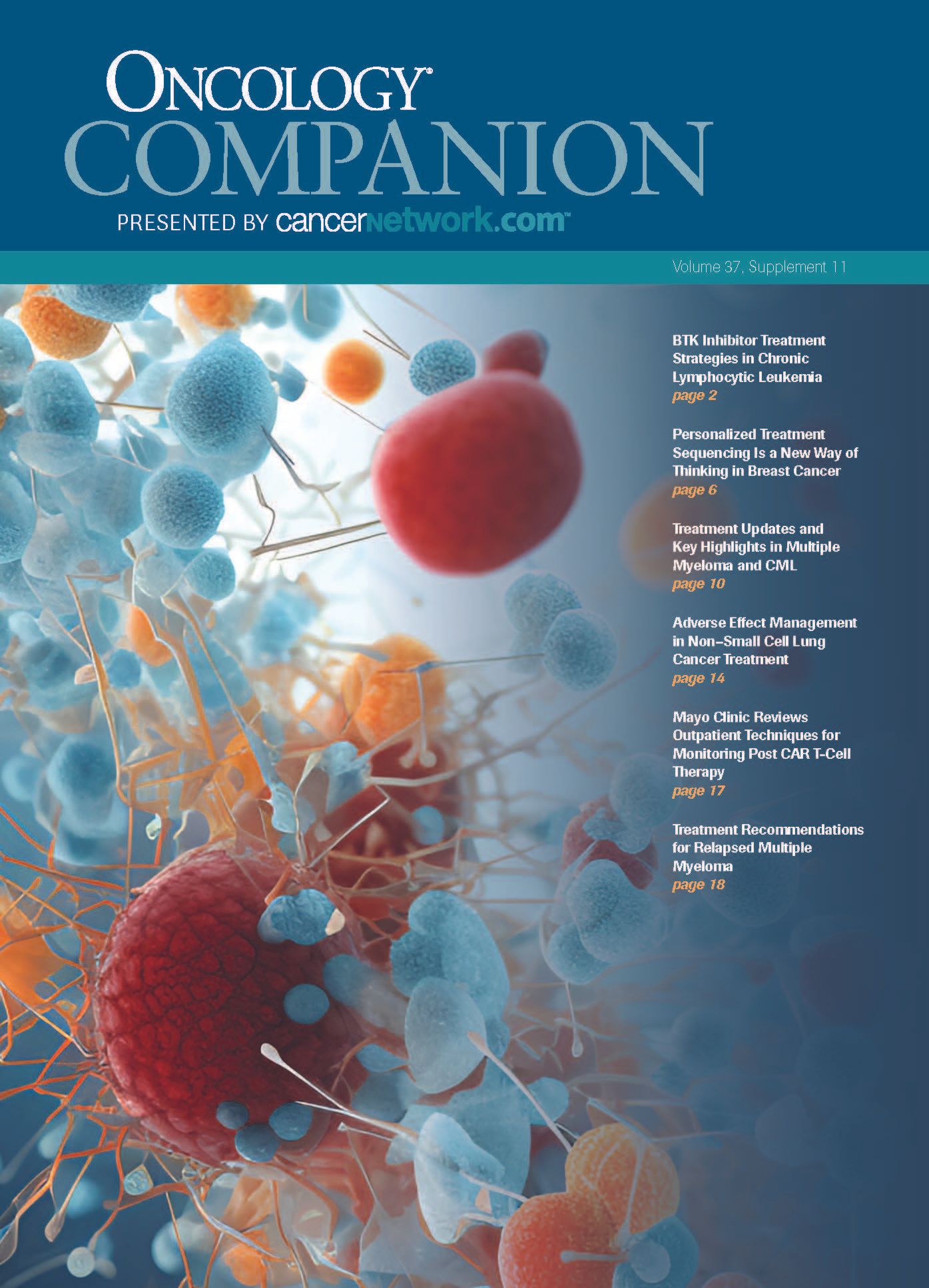Session 7: Institutional Perspectives from Mayo Clinic: Implementing Treatment with Bispecifics in Practice : Episode 11
Mayo Clinic Reviews Outpatient Techniques for Monitoring Post CAR T-Cell Therapy
Publication
Article
ONCOLOGY® CompanionONCOLOGY® Companion, Volume 37, Supplement 11
Volume 37
Issue 11
Pages: 17
In a recent Training Academy, experts discussed how to incorporate bispecific antibodies into patients with multiple myeloma.
Meet the Experts

In a recent Training Academy, experts discussed how to incorporate bispecific antibodies into patients with multiple myeloma.
Pivotal Trials in the Space
- Phase 1/2 MajesTEC-1 trial (NCT03145181; NCT04557098)1
- Helped lead to the approval of teclistamab-cqyv (Tecvayli)
- Top-line results:
- Overall response rate (ORR) of 61.8% (95% CI, 52.1%-70.9%)
- Median follow-up was 7.4 months
- Duration of response rate was 90.6% (95% CI, 80.3%-95.7%) at 6 months and 66.5% (95% CI, 38.8%-83.9%) at 9 months
- Phase 2 MagnetisMM-3 trial (NCT04649359)2
- Helped lead to the approval of elranatamab-bcmm (Elrexfio)
- Top-line results:
- ORR was 58%, and 82% of patients had responses lasting for at least 9 months.
- Phase 1/2 MonumenTAL-1 trial (NCT03399799; NCT04634552)3
- Helped lead to the approval of talquetamab-tgvs (Talvey)
- Top-line results:
- A 0.8 mg/kg subcutaneous dose of the agent resulted in an ORR of 73.6% (95% CI, 63.0%-82.4%).
- After a median follow-up of 6 months, the very good partial response rate (VGPR) was 58% and complete response (CR) rate or better was 33%.
- Corresponding ORR at subcutaneous-0.4 mg/kg dose was 73.0% (95% CI, 63.2%-81.4%), VGPR was 57%, and CR or better rate was 35% at a median follow-up of 14 months.
New Observation Advances at Mayo
- Patients at Mayo Clinic receiving chimeric antigen T-cell therapy can be remotely monitored using iPads to collect data with Bluetooth oximeter and blood pressure monitor.
- Helps monitor patients in an outpatient setting and check vitals between daily visits.
- Patients are told to stay between 15 and 30 minutes of the center during the first 1 to 2 weeks of treatment.
- If cytokine release syndrome develops, clinicians can be alerted quickly and patients will be enrolled as inpatient.
References
- Moreau P, Garfall AL, van de Donk NWCJ, et al. Teclistamab in relapsed or refractory multiple myeloma. N Engl J Med. 2022;387(6):495-505. doi:10.1056/NEJMoa2203478
- Pfizer’s Elrexfio receives U.S. FDA accelerated approval for relapsed or refractory multiple myeloma. News release. Pfizer. August 14, 2023. Accessed August 14, 2023. https://bit.ly/3DTCRIY
- Chari A, Touzeau C, Schinke C, et al. Talquetamab, a G protein-coupled receptor family C group 5 member D x CD3 bispecific antibody, in patients with relapsed/refractory multiple myeloma (RRMM): phase 1/2 results from MonumenTAL-1. Blood. 2022;140(suppl 1):384-387. doi.10.1182/blood-2022-159707
Articles in this issue

Mayo Clinic Reviews Outpatient Techniques for Monitoring Post CAR T-Cell Therapy
Treatment Recommendations for Relapsed Multiple Myeloma
BTK Inhibitor Treatment Strategies in Chronic Lymphocytic Leukemia
Treatment Updates and Key Highlights in Multiple Myeloma and CML
Personalized Treatment Sequencing Is a New Way of Thinking in Breast Cancer
Adverse Effect Management in Non–Small Cell Lung Cancer Treatment
Newsletter
Stay up to date on recent advances in the multidisciplinary approach to cancer.
Related Content
Artificial Intelligence in Cancer Care: Addressing Challenges and Health Equity
Viviana Cortlana, MS4;Kennedy Itodo, BS;Yan Leyfman, MD;Jenna Ghazal, BSc;Vraj JigarKumar Rangrej, MBBS;Adhith Theyver;Chandler H. Park, MD, FACP
April 15th 2025Article
Artificial intelligence may mitigate overdiagnosis and unnecessary treatments in cancer cancer care by integrating with precision medicine.